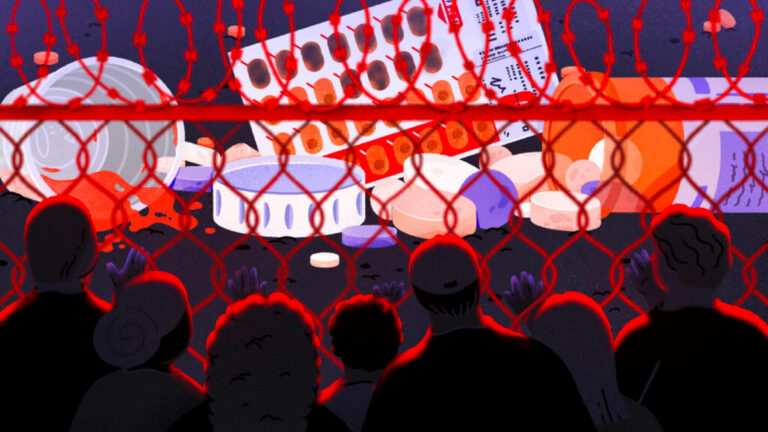Black and Hispanic people are “significantly less likely” to receive two medications used to treat opioid addiction, according to a new study.
Compared to white patients, Black and Hispanic patients were 17.1% and 16.2% less likely, respectively, to receive either buprenorphine or naltrexone within 180 days of a health care event related to their substance use, like a nonfatal overdose or addiction-related infection.
The study, published Thursday in JAMA Network Open, adds to a large body of evidence that the quality of Americans’ addiction treatment is heavily influenced by their race. It is the first research, however, to analyze data from multiple payers at once: It includes data from roughly 176,000 health events related to substance use, and tracks receipt of medication based on claims data from Medicaid programs, Medicare Advantage, and private commercial insurers.
“We’ve seen rising overdoses and rising overdose deaths in racial and ethnic minoritized communities, particularly Black Americans, and a lot of that has been attributed to lack of access to effective medications that we know reduce and curb these risks,” said Utsha Khatri, the paper’s lead author and assistant professor at the Icahn School of Medicine at Mount Sinai.
The study also showed that patients using either of the government-backed insurance options — Medicaid or Medicare Advantage — were substantially more likely to receive buprenorphine or naltrexone than those with commercial insurance.

How the U.S. is sabotaging its best tools to prevent deaths in the opioid epidemic
The study does carry a major limitation: It does not include data on patients who take methadone, the most effective treatment for opioid use disorder (OUD).
Given the stringent requirements that often accompany methadone treatment, buprenorphine and naltrexone are often lower-barrier options. Buprenorphine can be taken daily or as a longer-action injection, and can be prescribed by almost any doctor and picked up at most pharmacies.
Naltrexone, often marketed as the long-action injection Vivitrol, aims to curb opioid cravings in people who are already abstinent. Data supporting its effectiveness are mixed, but criminal justice settings often favor the medication because, unlike methadone and buprenorphine, it is not an opioid.
Though the research notes that access to medications for opioid use disorder has improved in recent years, racial disparities persist.
The phenomenon is reflective of multiple, compounding tragedies, said Tracie Gardner, a veteran policy advocate in New York state who recently founded the National Black Harm Reduction Network. Among them, she listed limited access to health services in many communities of color and entrenched stigma around using medications to treat addiction, and the disproportionate incarceration of Black people, leaving them at the mercy of jails or prisons that might oppose the use of medication altogether.
“Because historically these medications have been siloed from the health care system, there is a stigma associated with them as not being health care,” she said. “This medieval stuff is still infused in what we’re calling a 21st-century addiction treatment setting.”
Gardner also pointed to the hostility within certain 12-step programs, like Alcoholics Anonymous or Narcotics Anonymous, toward people using medication as part of their addiction recovery.
“The other piece is that there are elements of 12-step that make it very difficult for people to be on medicine that will reduce their risk of overdose,” she said. “Being called ‘dirty’ when you’re taking medicine prescribed by a health care professional is internalized in 12-step. And then that is perpetuated by people who are in recovery.”

To combat the disparities, the paper’s authors advocate for “culturally sensitive care and standardized OUD screening,” and the integration of addiction care and medication prescribing across the health system, far beyond specialized addiction treatment providers.
Medicaid programs have served as an example in recent years, they wrote, by covering all approved medications for opioid use disorder and offering coordinated care models.
“We should really be focusing on making sure Medicaid is expanded to eligible individuals and not rolling back the benefit, as is currently being discussed,” Khatri said, citing current Republican proposals to cut the safety-net health program.
And despite recent drops in the overdose death rate, Khatri warned that not all communities have benefited equally, and that severe disruptions to the health system at large could risk undoing any gains made in recent years.
“While rates overall may be decreasing, that didn’t happen overnight,” she said, citing recent policy changes and an influx of opioid settlement dollars. “But not all communities are benefiting equally from these changes, and so continuing to make sure that we look at the communities that have been historically left out and criminalized for substance use disorder is really important.”
